Do you have a home theater? If not, are you thinking about installing one? If so, one of the first decisions you’ll need to make is whether to go with a gray projector screen or a white projector screen. Both have their pros and cons, and it can be tough to decide which is right for you. This article will help you make that decision by discussing the pros and cons of each type of screen. It will also offer some tips on how to choose the right one for your needs.
Why is the Color of the Projector Screen Important?
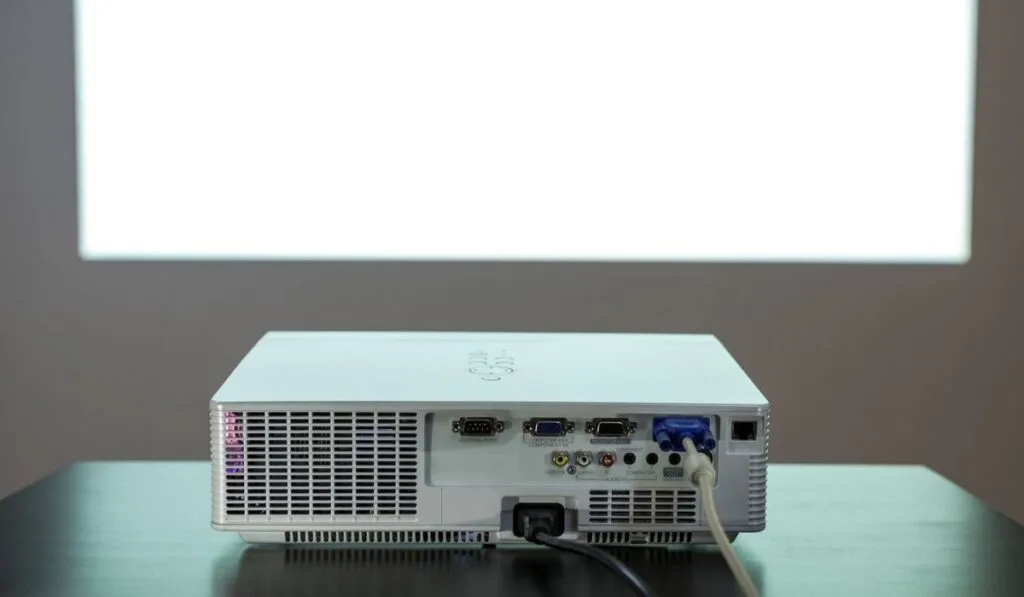
The color of the projector screen is important because it affects the viewing experience of your presentation. A white or neutral-colored projector screen will help to keep colors consistent, allowing for better visibility and contrast from different angles in a room. In addition, black or other dark colors can be used to absorb ambient light that may distract viewers from the content being presented.
The type of material used for the projection surface also affects how easily images can be seen on it, so selecting an appropriate fabric is key. Having a properly sized and correctly colored projector screen is essential for creating an immersive environment that allows everyone in the audience to get the most out of your presentation.
Another factor to consider when choosing a projector screen color is its ability to reduce reflections off of walls and other surfaces. A matte finish is usually the best choice for this, as it helps to minimize distracting reflections. Ultimately, the right projector screen color will enhance your presentation, no matter what type of content you are displaying.
By taking into account factors like contrast, clarity, size, and ability to reduce reflections, you can ensure that everyone in attendance gets the best projection experience possible. The right color projector screen can make a huge difference in how enjoyable an event is for everyone involved.
What to Know About Grey Screens for Projectors?
Grey screens are used to provide a neutral viewing environment for any type of projection device. The grey screen acts as a middle ground between pure white and black, providing the best image quality from all available options. Grey screens have been around for decades and continue to be a popular choice among movie theater, conference room, and home theater projector users alike.
When selecting a grey screen, there are several factors to consider such as gain, material type, ambient light filtering properties, color accuracy, viewing angles, and more. Each factor will determine how bright the projected image can appear and also affects the overall contrast ratio of the display.
Gain is an important factor when considering a grey-screen purchase. A higher gain number means that it will reflect more light to the viewer, and is ideal for darker viewing environments. A lower gain number means that less ambient light can be filtered out, which is better in highly lit rooms with many windows or bright lights.
The material type of a grey screen is also important when selecting one. Many are made from vinyl, PVC, magnetic material, or fabric. Vinyl screens tend to be the least expensive and are commonly found in home theaters. Magnetic materials can provide good color reproduction while having the benefits of being removable and repositionable if needed. Fabric screens offer better contrast ratios than other materials but can require additional maintenance due to dust build-up over time.
Grey screens are perfect for users looking for a neutral background color when projecting images. The various factors to consider when selecting one can help users decide which grey screen is right for their particular application.
With their wide range of features and benefits, there is sure to be a grey screen that fits any user’s needs [1].
All About White Screens for Projectors
White screens for projectors come in a variety of types and sizes to meet the needs of any home or office. Standard white matte screens are often used for presentations and other activities that require a larger display than can be achieved with a computer monitor. White screens also offer superior picture quality when compared to standard grey screens, due to the higher brightness levels they provide.
No matter what type of screen you’re looking for, there is an option available that will fit your needs. Whether you need a large screen for an office presentation or a small one to watch movies in the comfort of your own home, there is a white screen that will suit your needs.
With the right white screen, you can make sure your presentations and other activities are seen clearly and accurately by the entire audience. Make sure to keep size, features, and quality in mind when shopping for a white projector screen so you can find one that fits all of your requirements.
Comparing a Grey and White Screen Surface
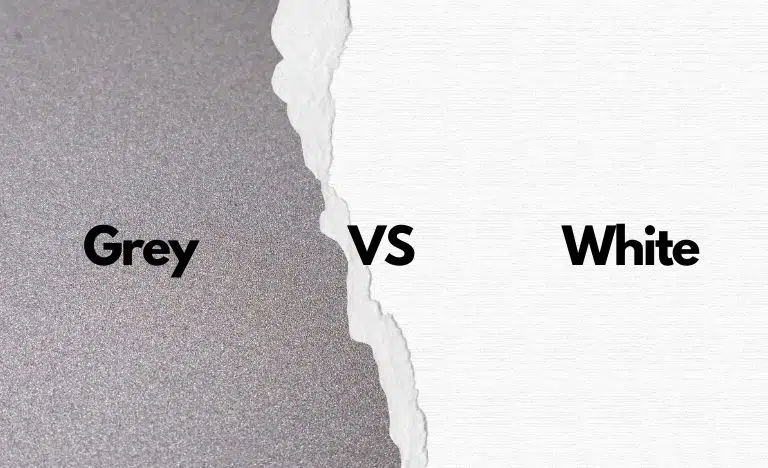
Picture Quality
When comparing a grey and white screen surface, the picture quality can vary widely. Grey surfaces tend to be darker than white surfaces and offer less contrast. This makes it difficult to view bright and vibrant pictures accurately on a grey surface. White surfaces, on the other hand, create more accurate colors and produce brighter images with higher contrast. The whites of the screen look cleaner when viewed from different angles due to the white reflective properties of the material.
Durability
Grey screens are usually composed of a tougher material than white screens, making them more resistant to scratches or fading over time. They also do not show dirt as easily as white screens because they absorb light, so stains or dirt do not stand out as vividly against their dark background. White screens, however, may be more prone to scratches and fading due to the softer material used for their construction.
Energy Efficiency
Grey screens are typically more energy efficient than white screens because they absorb light rather than reflect it back into the environment. This means that they require less energy to produce the same level of brightness as a white screen. White screens, on the other hand, reflect light which can make them inefficient in terms of energy usage.
Ambient Light Control
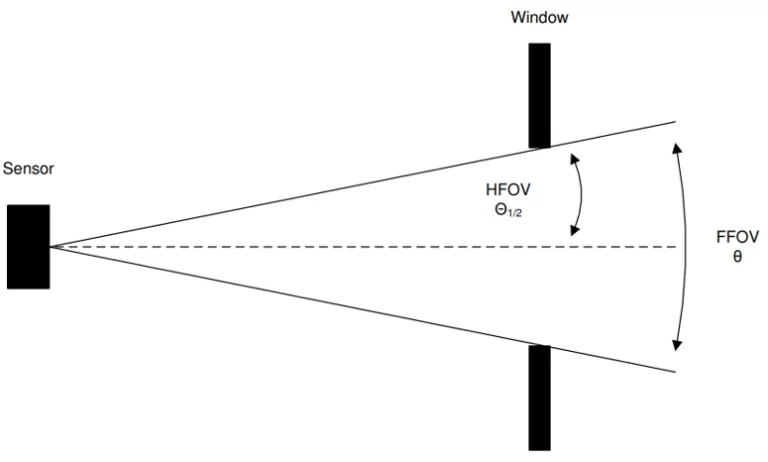
When it comes to ambient light control, grey screens have an edge over white screens. The dark surface of a grey screen helps absorb any stray light in the environment, leading to less glare and reflection on the screen’s surface. White screens can create more glare when exposed to too much ambient light due to their reflective properties.
Black Level
Grey screens tend to have a higher black level than white screens because they absorb light more effectively. This makes them better for darker picture settings, such as night scenes or dark movies. White screens can also produce satisfactory blacks but tend to be less effective in darker scenes since the extra reflected light can make the picture appear washed out [2].
Overall Appearance
The overall appearance of a grey screen is usually more muted and subtle compared to that of a white screen. The dark surface helps create a more calming atmosphere while the lighter shades of white help create an energetic and vibrant space. Ultimately, it depends on your personal preference and what kind of look you are trying to achieve in your home theater setup when choosing between these two screen surfaces.
The Advantages and Disadvantages of a Gray Projector Screen
One of the major advantages of a gray projector screen is that it reduces glare and improves picture clarity. Gray screens are designed to absorb ambient light while reflecting projected images in a directional manner, which helps avoid any distortions or washouts from high-contrast lighting sources. This makes them perfect for use in environments with bright light, such as lecture halls and classrooms.
Additionally, the neutral color temperature provided by a gray projector screen can help reduce eyestrain, allowing viewers to focus their attention on the image rather than strain their eyes trying to compensate for color differences.
A major disadvantage of a gray projector screen is its limited range of colors when compared to other types of projection screens. Due to the limited spectrum absorption qualities of gray screens, they are not suitable for displaying vivid images with a wide range of colors.
Additionally, gray projector screens may require some additional adjustment to achieve optimum performance in terms of picture quality and brightness. Overall, the choice between using a gray projector screen and another type of projection screen such as white or black should be determined based on the specific environment in which it will be used.
While gray projector screens may have their limitations when it comes to color fidelity and contrast range, they can still provide an excellent level of image clarity in environments with high levels of ambient light [3].
The Advantages and Disadvantages of a White Projector Screen
A white projector screen is a great choice for the home theater enthusiast, as it allows you to enjoy a bright and vibrant image that offers exceptional clarity and contrast. While there are many benefits associated with using this type of screen, there are also some potential disadvantages to consider before making your purchase.
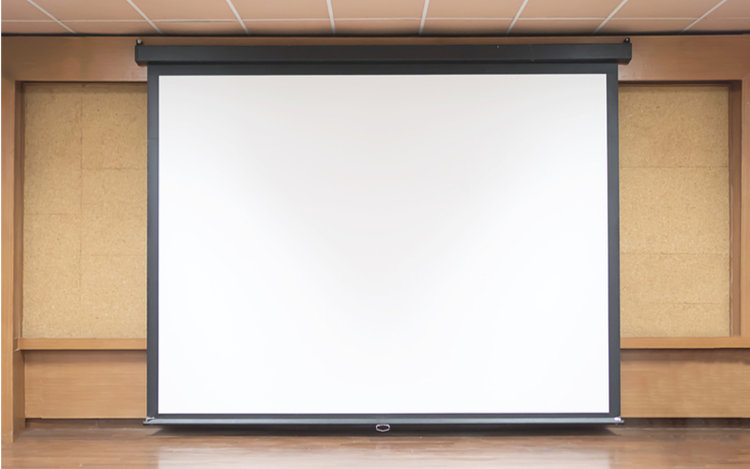
One advantage of a white projector screen is its ability to produce intense blacks and whites due to its high reflectivity. This increases the overall brightness of the projected image, which can be particularly beneficial when viewing movies or television shows in darker rooms. The greater level of light reflection also helps make colors appear more vivid and dynamic while reducing eye strain during long viewings.
Another benefit of a white projector screen is that the color temperature of white is naturally higher than other colors. This means that the projected image will appear cooler and more natural, making it easier to watch for longer periods without becoming uncomfortable.
However, there are also some drawbacks to using a white projector screen. The added brightness can cause glares and hot spots on the screen if your projector isn’t calibrated correctly or if you’re not careful about positioning the projector on the screen surface.
Additionally, since many projectors emit different light temperatures depending on their type, calibration may be necessary to optimize the image quality when using a white projector screen. Finally, whites tend to degrade faster over time than darker colors do, so you may have to replace your white projector screen sooner than if you had chosen a darker color.
Overall, white projector screens are an excellent choice for the home theater enthusiast looking to create a more immersive viewing experience. They provide greater brightness and contrast, help reduce eyestrain, and offer a naturally cooler color temperature for long viewings [4].
How to Make a DIY Home Cinema/Theater Room?
Making your own DIY home cinema/theater room is a great way to enjoy movies and shows in the comfort of your own home. Here are some tips to help you get started:
- Choose the Space – First, you’ll need to decide where in your house you want to create your theater room. Choose a space that has good acoustics and plenty of room for seating, sound equipment, and a projector or large television.
- Gather Your Equipment – Once you have chosen the perfect spot, it’s time to start gathering equipment such as speakers, amplifiers, projectors, screens, and more. Make sure to choose items that fit within your budget while still providing quality sound and visuals.
- Get Soundproofing – For the best experience, you’ll want to make sure that your theater room is properly insulated and soundproofed. This can help keep outside noises from disturbing your movie time, as well as trap any sound inside the room for a better surround-sound experience.
- Add Seating – Now it’s time to get comfortable! Choose a seat based on how many people you plan to have in your theater room and what kind of furniture will fit within your space. Recliners are always a popular choice for home theaters, but bean bags or cushions also make great seating options.
- Set Up Your Entertainment System – Finally, it’s time to set up your entertainment system. This can include a Blu-Ray player, streaming device, gaming console, and more. Make sure all of the wires are connected properly and double-check that it is compatible with your television or projector.
Creating your own DIY home cinema/theater room is an exciting project that can bring you hours of entertainment! With these tips in mind, you should have no problem creating an amazing theater experience right in your own home [5].
How to maintain Grey and White Screens for Projectors?
To maintain grey and white screens for projectors, dust should be regularly removed with a soft cloth or vacuum cleaner. Wipe the surface of the projector screen gently, taking care not to leave any scratches on the material. In addition, it is important to keep the projector at a distance from direct sunlight and other sources of heat to prevent the warping of the material.
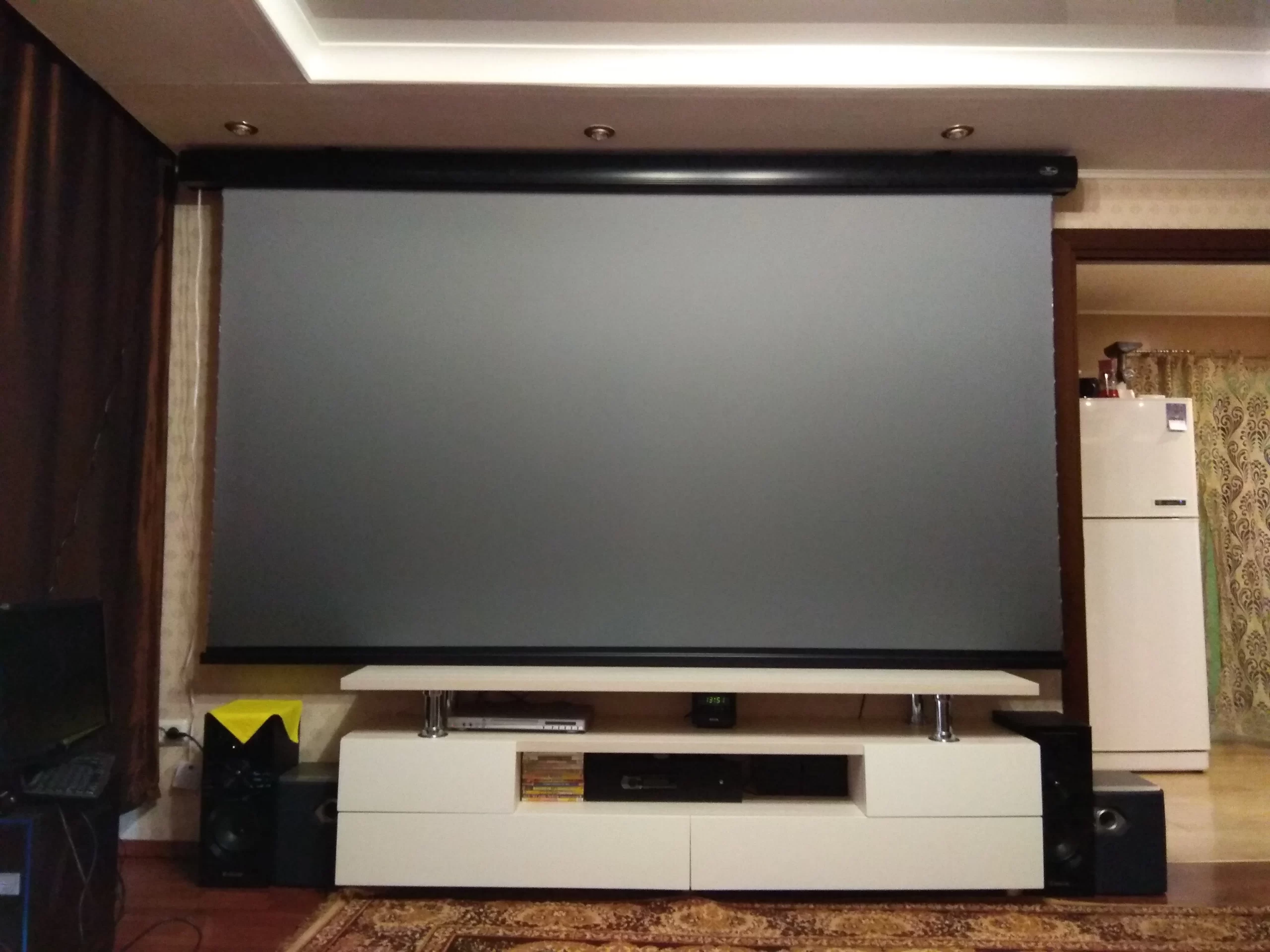
When cleaning, start from one corner of the screen and move in gentle circles to the other end, ensuring that no area is missed. Avoid using any harsh chemicals or abrasive cleaning materials when cleaning projector screens as they can damage the material and reduce its lifespan.
Finally, ensure that any pens or markers used in presentations are completely wiped off with a damp cloth – these types of ink can permanently stain the screen. Regular maintenance will help keep your projector screen looking new and vibrant for longer!
FAQ
Which color is best for a projector screen?
The best color for a projector screen depends on the environment, lighting, and type of content being projected. In general, white or off-white screens are preferred because they reflect the full spectrum of colors accurately and with minimal distortion. For dark rooms and high-contrast images, gray screens can help reduce glare from ambient light sources.
If you’re projecting in an area with lots of natural light, a black screen may be preferable as it absorbs more light than a white surface. Finally, depending on your specific needs, there are specialty screens available that cater to different types of projection needs such as enhanced contrast ratio or wide viewing angles.
Why is grey color good for a projector?
Grey screens are ideal for high-contrast images and dark rooms because they reduce the amount of light that is reflected back onto the projector, making it easier to see details in darker images. Additionally, gray screens have a wider viewing angle than white or black screens, which can be beneficial for large presentations.
Finally, grey screens tend to absorb ambient light better than other colors so that you don’t get overwhelmed by excessive brightness from extraneous sources like windows or overhead lights.
What size screen do I need for my projector?
The size of the screen you need depends on your particular environment and needs; however, as a general rule, you should use a screen at least 1 foot larger than the throw distance of your projector. Additionally, it’s best to opt for a screen that is 1.2-1.5 times the throw distance of the projector which will allow you to get more sharpness and clarity in your images.
Finally, keep in mind that screens come in a variety of aspect ratios so make sure to choose one that matches the aspect ratio of your content; otherwise, you may find yourself with black bars on either side of your image.
Are there any special considerations when mounting a projector screen?
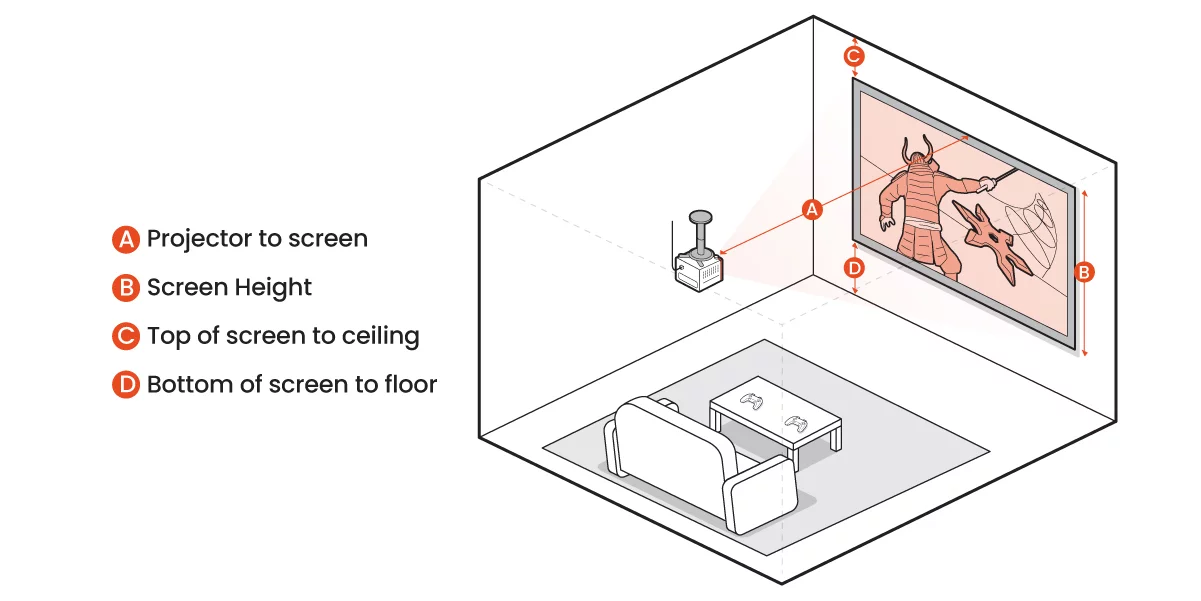
Yes! When mounting your projector screen, be sure to follow all instructions provided by the manufacturer carefully as it could affect the quality of your projection experience. Additionally, always install your screen away from direct sunlight or bright lighting sources as this can cause glare and reduce image visibility. Finally, ensure that your screen is securely fastened to the wall or ceiling so that it won’t wobble or move when in use.
What are the advantages of using a retractable projector screen?
Retractable projector screens are a great choice for those who want to make the most of their space as they can easily be stored away when not in use. Additionally, these types of screens come with various mounting options such as ceiling mount, wall mount, or floor stand which makes them incredibly versatile. Finally, many models also feature black borders around the edges to create an even borderless viewing experience.
Which type of screen is best for a projector?
The type of screen you choose depends on the environment and specific needs of your application. For dark rooms with high-contrast images, gray screens are ideal as they reduce glare from ambient light sources. If you’re projecting in a room with lots of natural light, then a black screen may be preferable as it absorbs more light than other colors.
Finally, specialty screens are available for applications requiring enhanced contrast ratio or wide viewing angles. For best results, always consult the manufacturer’s instructions when choosing a projector screen to ensure that you get the most out of your projection experience.
Is a silver screen better than a white screen?
A silver screen is not necessarily better than a white screen, as the type of projector screen you choose depends on your specific needs. While a silver screen may have a higher contrast ratio, resulting in sharper images, it also reflects more ambient light which can affect visibility in brighter rooms.
On the other hand, white screens tend to be more reflective and therefore are better suited for environments with lots of natural or overhead lighting. Ultimately, it’s best to evaluate your particular situation and choose the right screen based on what will work best for you.
Useful Video: Grey vs White Projection Screen Comparison – Which is Right for You?
Conclusion Paragraph
Gray and white projector screens are both useful to have in your home theater, but they each offer different benefits. Gray projector screens provide superior contrast and image quality compared to white screen materials while being less expensive. White projector screens are very affordable, making them a great choice for those looking for an inexpensive way to enjoy movies and other media in their homes. Ultimately, the decision of which projector screen material is right for you will depend on your budget and individual needs. No matter which type of projector screen you choose, it’s sure to enhance your home theater experience!
References
- https://www.lifewire.com/use-grey-or-white-projector-screen-5206756
- https://www.gadgetreview.com/grey-projector-screen-vs-white
- https://glintylab.com/gray-vs-white-projector-screen/
- https://projectorgarden.com/gray-vs-white-projector-screen/
- https://www.thespruce.com/how-to-build-a-diy-home-theater-5191322

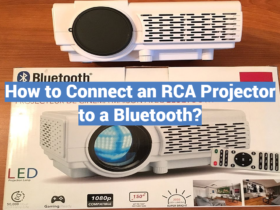



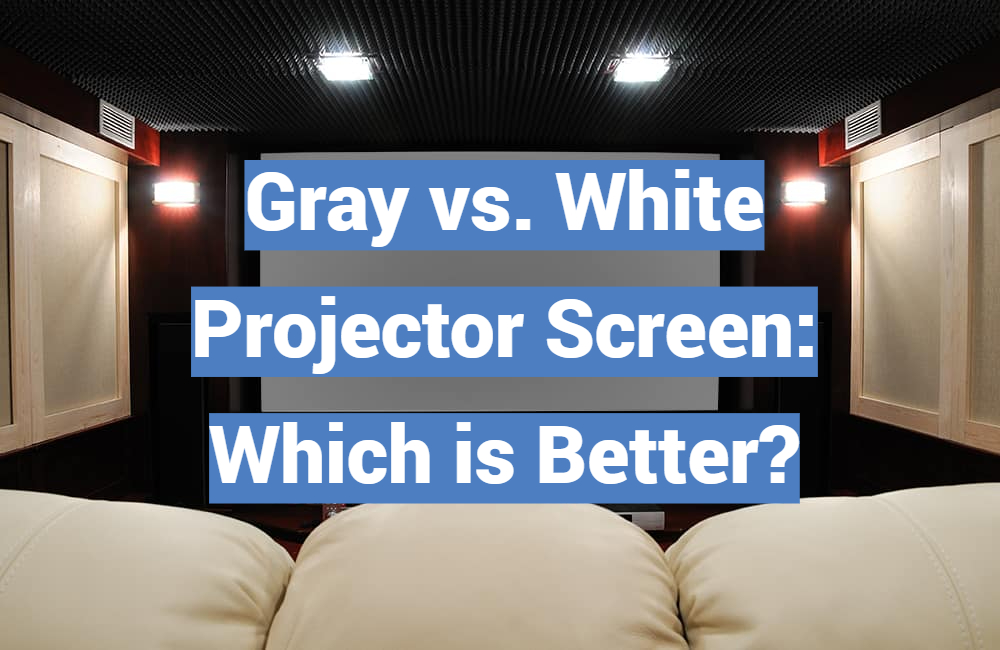
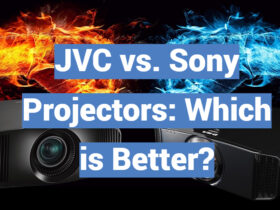
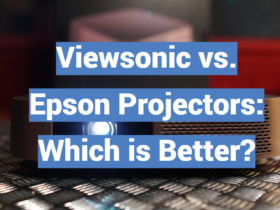
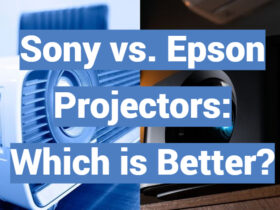
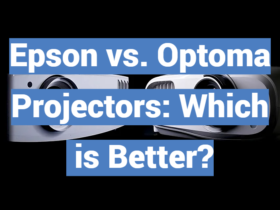
Leave a Review